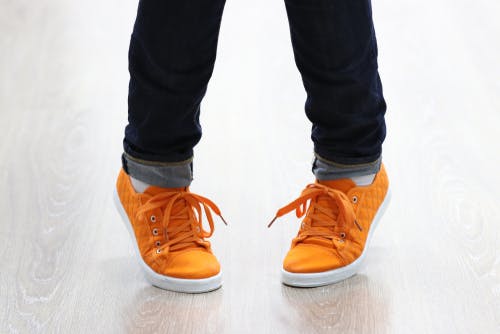Is your child In-Toeing?

In-toeing, also known as pigeon-toed, is a common condition in children where the feet point inward when walking or standing. In toeing will present between the ages of 1.5 and 2.5 years. Milder cases of in-toeing should self correct by about 5 years of age.
In-toeing can occur in one or both feet and can be caused by a variety of factors including:
- Tibial torsion, which is a twisting of the shin bone. This can occur during fetal development or in early childhood and can cause the feet to point inward.
- Femoral anteversion, which is a twisting of the thigh bone. This can also occur during fetal development or in early childhood and can cause the feet to point inward.
- Metatarsus adductus, a condition in which the front part of the foot is bent inward. This can be present at birth and can cause the feet to point inward.
- Reverse W sitting is a term used to describe a specific sitting position in which children sit with their legs bent at the knees and the ankles crossed behind them, forming the shape of a "W" and can be harmful to a child's development if they sit in this position for prolonged periods of time. To avoid problems, parents and caregivers should encourage children to sit in a more symmetrical position, such as sitting cross-legged or with their feet flat on the floor and engage in activities that promote core strength and stability.
- Hypermobility in the hip joints
In most cases, in-toeing is a normal variant of growth and development and does not require any treatment. However, in some cases, such as severe in-toeing or if it causing pain or difficulty with walking, frequent tripping or falling, treatment may be recommended.
Treatment options can include stretching and strengthening exercises, shoe inserts, or bracing.
It is important to note that in-toeing can also be a symptom of a more serious condition, such as cerebral palsy or a neuromuscular disorder, so it is always best to consult a professional if you are concerned about your child's walking.